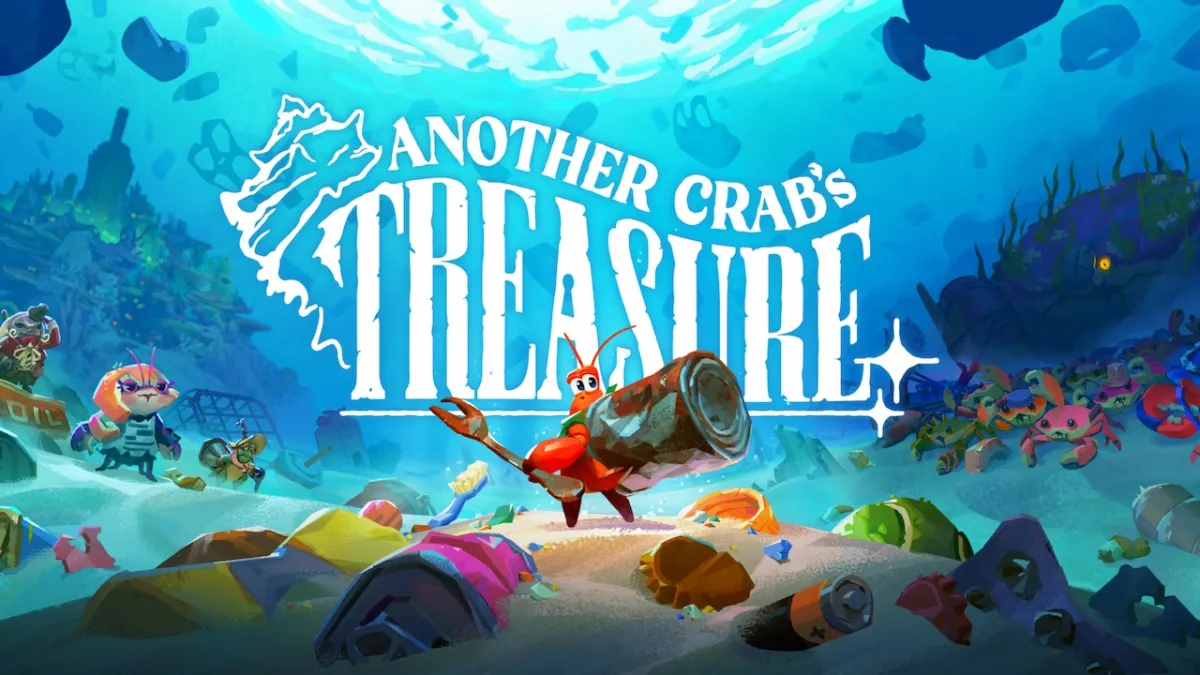There have been space marines before, but none like this.
Gears of War put the Xbox 360 on the map, in much the same way as Halo had done for the original Xbox. It was a game that made us sit up, take notice, and believe that Microsoft’s hardware was capable of toppling Sony and its dual-generation dominance with PlayStations one and two.
Then there was Gears of War 2. By improving the core mechanics of the original and expanding the game with new modes, full-campaign co-op and refined gameplay, Gears 2 took a great game and made it better, setting a new standard for console third-person shooters.
Predictably, perhaps, the standard has just been raised again. Enter Gears of War 3, the final game in the story of Marcus Fenix and his battles with the Locust and Lambent.
Gears of War 3’s campaign is the most exhaustive of the series; featuring more characters, a deeper story, new enemies, new environments as well as the trademark set-piece moments, crisp visuals and hard-hitting weapons. Multiplayer sees various new modes, an increased player count and a greatly improved leveling up system.
If you’re the type that worries about whether you’re going to get value for your forty-quid then, in this case, you can rest easy. This is a game that’s expertly constructed; the product of a team seemingly in their element, buoyed by the success of the series so far and the expectations of their audience.
The campaign in particular displays a wonderfully designed cohesion amongst its many constituent parts – the world, characters, gameplay, weapons and enemies. Like the previous game, the pacing is excellent. The tight interweave of plot and gameplay has resulted in a greater sense of engagement from both elements and, despite the cast’s brawn-but-no-brain aesthetic, provides a palpable emotional attachment to the characters involved.
As you’d expect, events and actions are ferocious, brash, violent and overtly masculine. But, despite the sticky lacquer of testosterone on the surface, the core of the game is brilliantly refined and realised. From the intimate over-the-shoulder viewpoint the staple rhythm of run, cover, shoot, move, chainsaw through throat, revive partner, cover is exhilarating and visceral.
Combined with the unrelenting, intelligent A.I. (on Hardcore and Insane difficulties, at least) you’ve got a game that offers a significant challenge without resorting to cheap tricks or making you feel as though you’re being cheated on every death. Indeed, the way the game can generate such a genuine warzone-like feel while using only half the enemy count employed by most of its peers is testament to the skills of Epic’s design teams and the idea that quality trumps quantity.
Where the weapons are involved though, it’s both the quality and the quantity that have been improved. Most impressive of the expanded arsenal are the Digger and Sawed-Off Shotgun. The Digger fires a grenade just below the surface of the ground which re-emerges the other side of cover and explodes in your (or your enemies’) face.
At the other end of the spectrum the Sawed-Off Shotgun is effective only at extremely close-range. It’s undoubtedly the most powerful of the game’s ‘standard’ weapons, capable of taking out four or five enemies if they’re close enough.
Both of these firearms stay true to the intense, blood-heavy nature of the series while also remaining in keeping with the ‘different tools for different jobs’ structure of the weapon selection. Among others, the new Retro Lancer (slashing chainsaw replaced with charging bayonet), the Oneshot (kills almost every enemy in, well… one shot) and the Incendiary Grenade (napalm) are also worthy of note and liberal use.
There’s even the ‘SilverBack’ mech-suit, which resembles something from Avatar and gives you control of a powerful mini-gun, shield and rocket launcher combo. It is possible to meet your end in a SilverBack, but it’s a rarity, the focus of the thing to provide a concentrated shot of ‘badass’.
Enemies have access to all of the same tools as you (minus the SilverBack) which can create some interesting match-ups and outcomes in crowded areas. You’ll also have to worry about the abilities of certain new enemies, particularly the Lambent that self-detonate and/or fire exploding one-hit-one-kill projectiles your way.
Despite that though, Gears 3’s campaign is not as difficult as I remember its Gears 2 equivalent being. The reason for this seems to be due to the fact that the whole game has gone from two to four players, with either real or A.I. compatriots. While the combat itself is just as demanding as it ever was, having three others to revive you from the ‘down but not out’ state means that, by staying with your team mates, help is generally on tap.
That’s not to say you’ll breeze through the game without dying, though. You’ll die as many times as you did in Gears 2, only those deaths will be spread out over a campaign that’s 40-50% longer. I’d recommend anyone that has completed the previous games on Normal or above to jump straight into Hardcore if you’re after a similar challenge, especially if playing as a group of four (although the difficulty does seem to scale slightly depending on the number of human players).
Other than the addition of four-player co-op, the other campaign improvements are more a case of refinement than overhaul. Still, those refinements play a surprisingly important role in proceedings and, taking into account the complexity and scale of the environments and the epic, immersive plot, it’s no exaggeration to single out Gears 3’s campaign as one of the best in the genre. And that’s despite a rather dodgy turret section late on…
Multiplayer is similarly well-made, but more addictive. Centre piece Horde Mode returns with a new in-game currency system that allows you to fortify the map with barriers, decoys, mechs and turrets (both manual and automatic) at the start of each wave.
Currency adds a degree of tactical thinking to what was previously pure smash and slash. If you plan on getting through all 50 waves (including the challenging ‘boss’ waves at intervals of ten) then you’ll have to think about the tactical element more than you may expect due to the increased enemy numbers.
The new Beast Mode turns the tables on Horde by putting you in control of the Locust/Lambent and sending you out to destroy the opposing humans. From the monstrous Berserker to the humble Wretch, all of the game’s major enemy types are there to play as. Each have their own skills that will be familiar to those that have played through the campaign; The Kantus can perform a neat dodge and revive fallen comrades, Boomer’s are slow but pack a Boomshot rocket launcher while Tickers can do nothing but scratch, run and explode (still a dangerous adversary for the unwary).
Things get more difficult as you approach the wave 12 finale as more and more ‘hero’ characters (Marcus, Baird, Cole, Carmine and co. from the campaign) are shipped in to take you down, but compared to Horde it’s lacking in the addictiveness factor. There’s no doubting Beast Mode’s entertainment value but it doesn’t share that same us-against-the-world charm of Horde.
Competitive multiplayer modes have been capped at six, some of which are new and some of which are amalgamations of previous game types. Warzone and Execution return almost unchanged and Wingman is back but with only four teams of two as opposed to the previous five (apparently in a bid to rid the mode of the spawning issues that plagued it last time). King of the Hill also makes the cut but shares some similarities with the old Annex mode; captured rings move around the map once exhausted and you don’t need to remain constantly within the ring to score points.
Capture the Leader bears some resemblance to Gears 2’s Guardian mode, only this time you must capture an enemy ‘Leader’ (randomly designed at the start of each round) and hold him as a meat shield for 30 seconds. Leaders can be put into ‘down but not out’ but can’t actually die, a handy balancing tool that makes up for the fact that the enemy can see each other’s leaders (via a floating icon) at all times and from all places.
Some of the most intense matches we’ve played so far have occurred during rounds of Capture the Leader, but its intensity means it’s difficult to stomach for prolonged periods.
New is Team Deathmatch, a typically Gears of War take on what is a staple game mode. Each team receives 15 respawns between them; once they’re diminished each member of the team then has one life remaining – first team out of lives loses, best of three rounds.
By putting a much greater emphasis on not getting killed, the pace of the Team Deathmatch is much more deliberate and thoughtful than its namesakes elsewhere. Considering the game type has not previously appeared in Gears of War it’s a thorough and well thought out addition that will become the preferred method of play for many (if not most).
All game modes feature the ability to ‘spot’ enemies, thus highlighting them on your teammates’ screen for a few seconds. ‘Down but not out’ has also been tweaked to allow players to get up by themselves after a set amount of time and all the new guns from the campaign feature. There’s also a new XP system which encompasses the entire game (single player and all) along with a whole host of medals and ribbons earned for performing specific feats or playing a certain number of matches.
Throw in the ‘Arcade’ Campaign structure in which players play through the story whilst competing with each other for points earned through kills and you’ve got one rather large game. There really is so much to do, especially when you consider the replay value of the campaign, Horde and Beast modes.
Gears of War 3 is a brilliant piece of blockbuster game design that shows, when in the right hands, that the 360 still has more to give. More than that though, this is a fittingly spectacular finale to the Marcus Fenix trilogy and evidence that no matter how loud, how brash, how violent a game may be, it can still be intelligent and emotionally affecting.
Read our interview with Gears of War 3’s leader writer, Karen Traviss, here.
Read Article Sand Land review – Story above all else

Rating:
7

Category:
Reviews
Sand Land review – Story above all else


